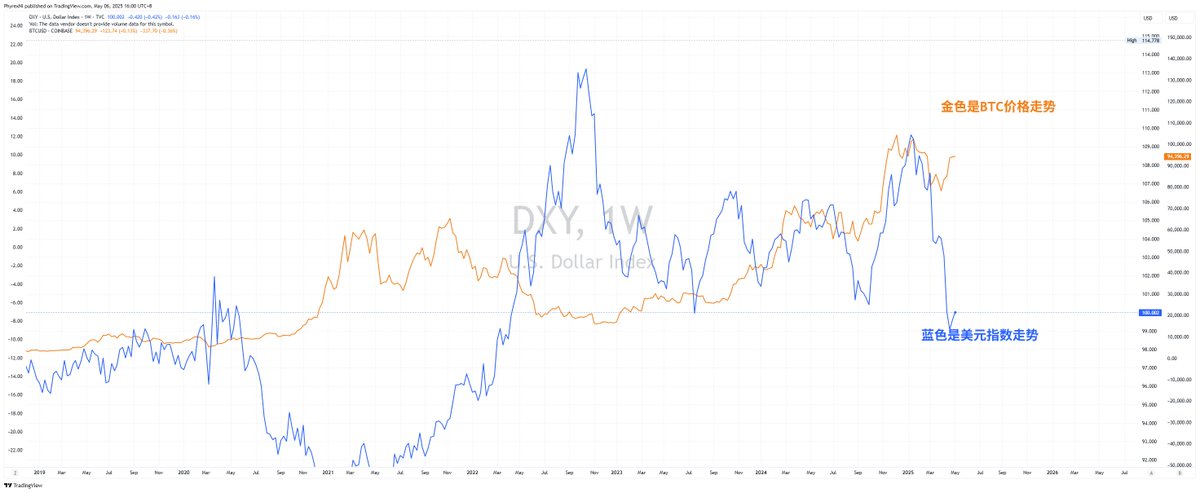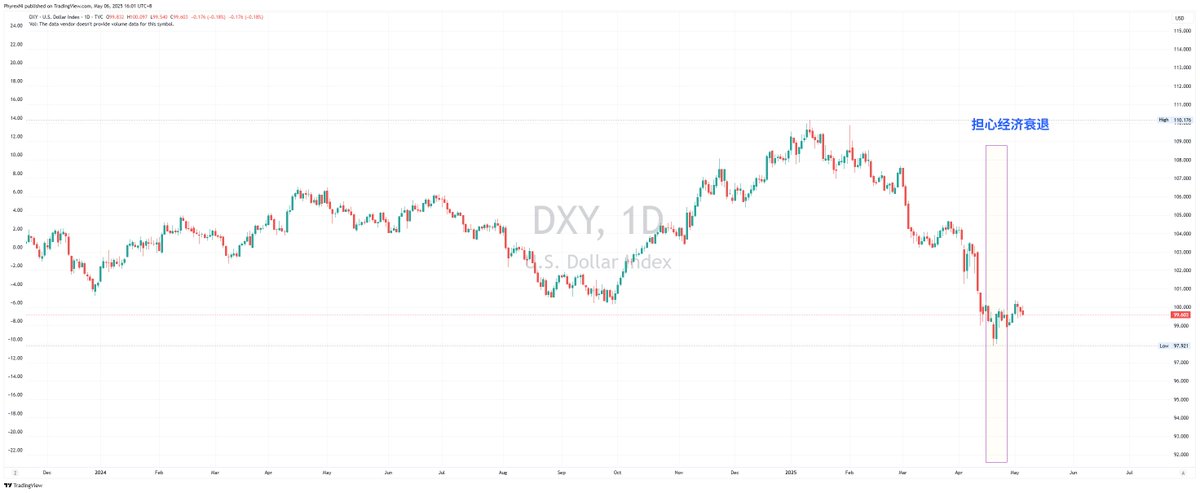The explanation from Brother Wu regarding the return of manufacturing to the U.S. is already very detailed.
From Brother Wu's perspective, I would like to extend the discussion on whether the return of manufacturing or the weakening of the dollar is beneficial or detrimental to cryptocurrencies.
To start simply, a decrease in the U.S. dollar index (DXY) often corresponds to an increase in investors' risk appetite. In layman's terms, this means that the interest rates on the dollar have decreased, and the returns from saving in banks or buying government bonds are too low, making it more attractive to invest in stocks or cryptocurrencies. Therefore, generally speaking, the dollar index and the price of $BTC are inversely related, although the situation in 2024 due to ETFs is a different matter.
However, there are two main possibilities for the decrease in the dollar index. The first is due to a reduction in U.S. interest rates, which essentially means that the Federal Reserve is entering a state of monetary easing. In this case, the decrease is beneficial for the risk market, as we mentioned earlier.
The second possibility is due to expectations of an economic recession. For example, two weeks ago, the DXY dropped to 97, but Bitcoin also fell at that time because there were expectations of a potential economic downturn. After the GDP and unemployment data were released, the DXY returned to 100.
Therefore, regarding the dollar index, we can simply conclude that as long as the depreciation of the dollar is not caused by a recession, it is beneficial for the risk market. (Strictly speaking, this is not entirely accurate, but it can be understood this way.) A more advanced perspective could be:
Non-recession + dollar depreciation + lower U.S. interest rates = beneficial for the risk market.
Next, the return of manufacturing is beneficial for the economic development of the U.S., but it may have mixed effects on the risk market and the cryptocurrency market. The positive aspect is that it increases the attractiveness of real economic funds, leading to more capital being invested in real industries. However, this portion of capital is likely to be withdrawn from previously speculative assets.
For example, the reason why BTC has been performing exceptionally well in this cycle, while other altcoins have struggled to keep up, and some have even declined (like $DOT), is that in a constrained liquidity environment, more funds are willing to invest in safer and more stable return products. In the cryptocurrency space, that is $BTC, while in the U.S. stock market, it includes the "seven sisters," including Nvidia.
Thus, while the return of manufacturing stimulates investor investment, it may also withdraw capital from the market. Assets that grow slowly or have a risk-return imbalance may experience liquidity withdrawal, while higher-quality assets will attract more liquidity.


免责声明:本文章仅代表作者个人观点,不代表本平台的立场和观点。本文章仅供信息分享,不构成对任何人的任何投资建议。用户与作者之间的任何争议,与本平台无关。如网页中刊载的文章或图片涉及侵权,请提供相关的权利证明和身份证明发送邮件到support@aicoin.com,本平台相关工作人员将会进行核查。



